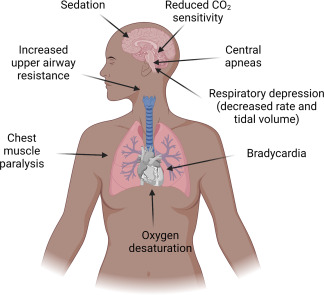A woman at 10 weeks of gestation who is seen in the prenatal clinic with presumptive signs and symptoms of pregnancy likely will have?
Chadwick's sign.
Hegar's sign.
a positive pregnancy test.
amenorrhea.
The Correct Answer is D
The correct answer is d. Amenorrhea.
Choice A: Chadwick’s sign is a non-specific, early sign of pregnancy that is typically characterized by a bluish discoloration of the cervix, vagina, and vulva. The Chadwick sign can typically be observed as early as six to eight weeks after conception, and commonly disappears shortly after birth. However, it’s not a definitive indication of pregnancy, and the absence of it on physical exam does not exclude a potential pregnancy.
Choice B: Hegar’s sign is a non-specific indication of pregnancy that is characterized by the compressibility and softening of the cervical isthmus (i.e., the portion of the cervix between the uterus and the vaginal portion of the cervix). It typically presents between the fourth and sixth week of pregnancy and may be present until the 12th week of pregnancy. However, the Hegar sign is not a definitive indication of pregnancy, and the absence of it does not exclude a potential pregnancy.
Choice C: A positive pregnancy test By 10 weeks, a home pregnancy test would almost certainly show a positive result if the woman is pregnant. This is because the hormone human chorionic gonadotropin (hCG), which is produced by the placenta after implantation of the embryo into the uterine wall, would be present in high enough levels to be detected by the test. However, a positive pregnancy test is not a presumptive sign of pregnancy, but rather a probable one.
Choice D: Amenorrhea, or the absence of menstrual periods, is often considered the most presumptive sign of pregnancy. This is because it’s one of the first noticeable signs of pregnancy for many women. By 10 weeks of gestation, the woman would likely have missed two menstrual periods if she usually has regular cycles. However, while amenorrhea is a common early sign of pregnancy, it can also be caused by various other conditions or factors such as stress, significant weight loss or gain, or certain medical conditions. Therefore, a missed period should be followed up with a pregnancy test to confirm pregnancy.
Nursing Test Bank
Naxlex Comprehensive Predictor Exams
Related Questions
Correct Answer is C
Explanation
Choice A reason: Woman shorter than 62 inches or 157 cm should not restrict her weight gain during pregnancy, as she may have a higher risk of delivering a low birth weight infant. She should follow the recommended weight gain guidelines based on her pre-pregnancy body mass index (BMI).
Choice B reason: Woman in early adolescence should not restrict her weight gain during pregnancy, as she is still growing and developing herself. She may need more calories and nutrients than an adult woman to support her own health and the fetal growth.
Choice C reason: Woman who was 30 lbs overweight before pregnancy should restrict her weight gain during pregnancy, as she may have a higher risk of developing gestational diabetes, hypertension, or preeclampsia. She should aim for a lower weight gain range than a woman with a normal BMI.
Choice D reason: Woman pregnant with twins should not restrict her weight gain during pregnancy, as she needs more energy and nutrients to support the growth of two fetuses. She should aim for a higher weight gain range than a woman with a singleton pregnancy.
Correct Answer is C
Explanation
Choice A reason: A sleepy, sedated affect is not a concerning sign, as it is a common side effect of magnesium sulfate. Magnesium sulfate is a central nervous system depressant that can cause drowsiness, lethargy, and reduced alertness.
Choice B reason: Absent ankle clonus is not a concerning sign, as it indicates a normal neuromuscular response. Ankle clonus is a rhythmic jerking of the foot when the ankle is dorsiflexed. It is a sign of hyperreflexia, which can occur in severe preeclampsia due to increased blood pressure and cerebral edema.
Choice C reason: A respiratory rate of 10 breaths/min is a concerning sign, as it indicates respiratory depression. This is a serious complication of magnesium sulfate toxicity, which can lead to respiratory arrest and death. The nurse should monitor the woman's respiratory rate closely and report any signs of respiratory distress.
Choice D reason: Deep tendon reflexes of 2+ are not a concerning sign, as they indicate a normal neuromuscular response. Deep tendon reflexes are graded from 0 to 4, with 2 being the average. Magnesium sulfate can cause hyporeflexia or areflexia, which are signs of magnesium sulfate toxicity.

Whether you are a student looking to ace your exams or a practicing nurse seeking to enhance your expertise , our nursing education contents will empower you with the confidence and competence to make a difference in the lives of patients and become a respected leader in the healthcare field.
Visit Naxlex, invest in your future and unlock endless possibilities with our unparalleled nursing education contents today
Report Wrong Answer on the Current Question
Do you disagree with the answer? If yes, what is your expected answer? Explain.
Kindly be descriptive with the issue you are facing.
